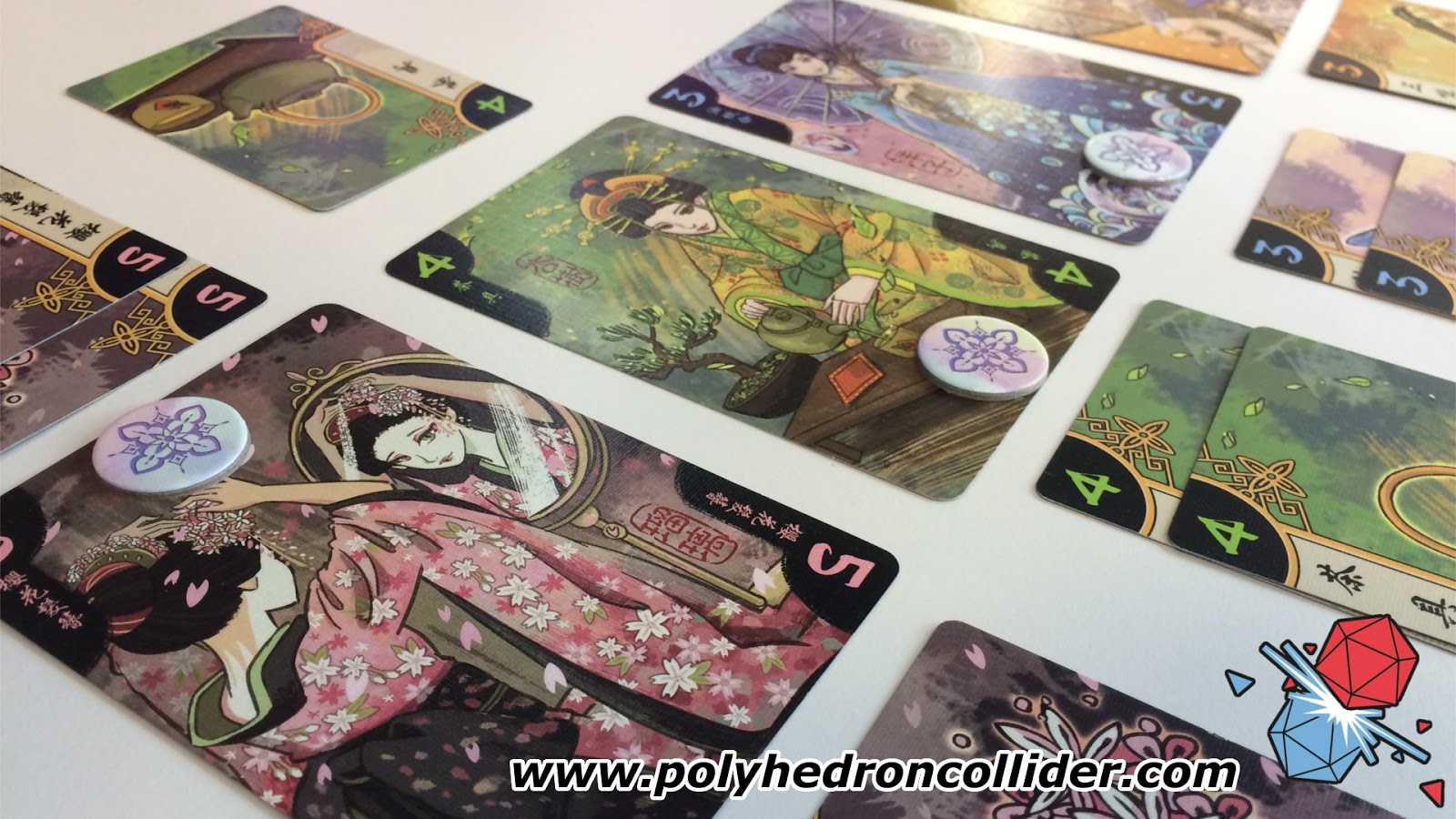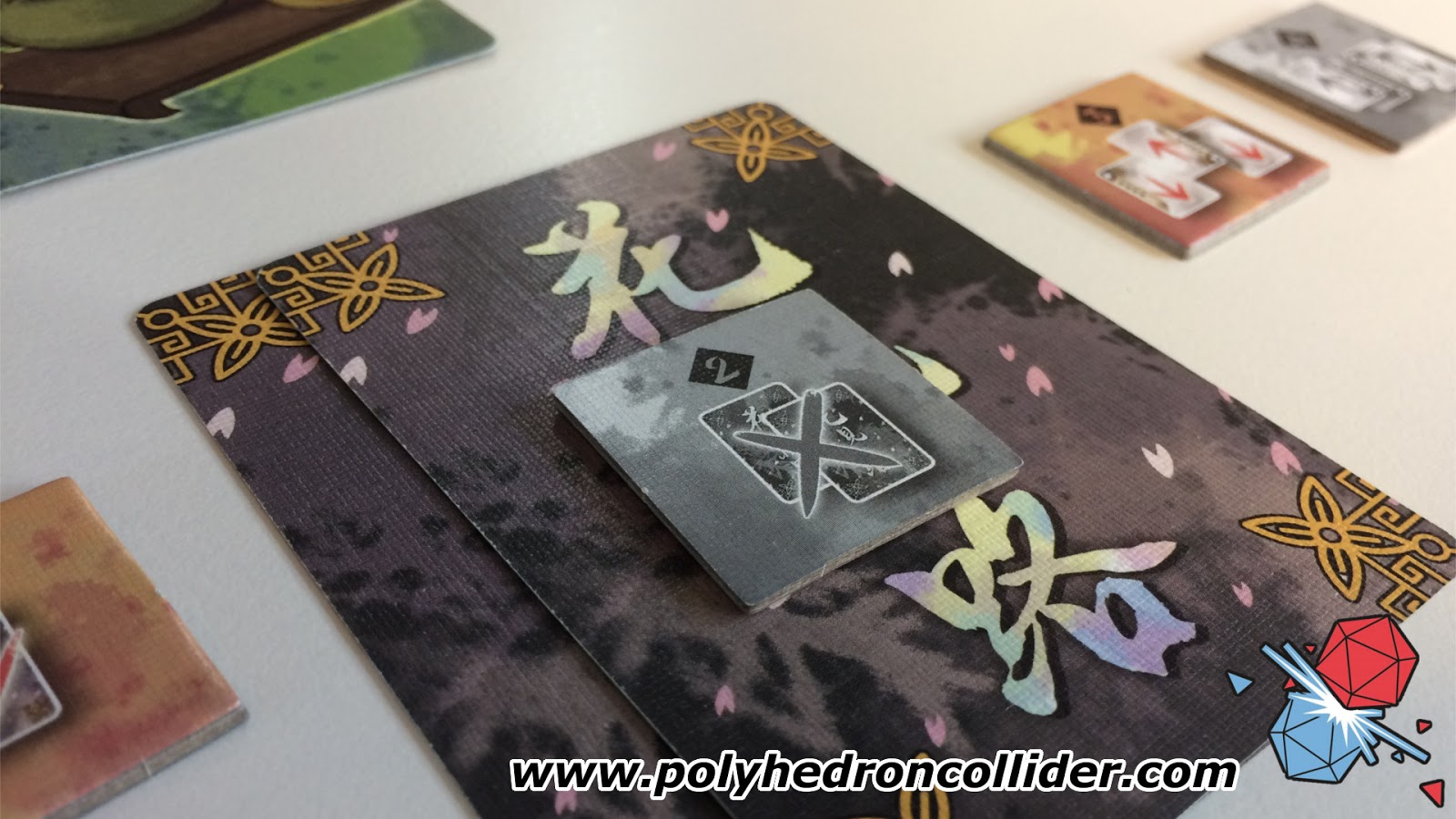Hanamikoji will grab you by the short ones as soon as it hits the table. From the moment that first card is drawn, you’ll be engaged, engrossed and you’ll love almost every agonising minute of this short, two-player game. What Hanamikoji does—and does really, really well—is that it realises that a great game is not one that poses a multitude of choices, but forces important choices.
Very roughly speaking, this is an area control game, where you are looking to claim the majority of geisha by playing more cards to them than your opponent. By “roughly speaking” I mean to gloss over all the intricacy, all the clever balance and delicacy of the game because the ‘what’ of this game is pretty standard, whereas the ‘how’ and the ‘when’ is the juicy stuff.
There are four explicit choices to be made, where each choice must be made and can only be made once. The game will end after both players have each made all four. This may well sound very simple and possibly a little innocuous and in many ways, that’s right. It is a very simple game, but these four choices are compounded by all the gears and facets within. To help you understand this all a little easier the choices are:
The Secret (Choice 1) – play a card face-down which will be revealed at the end of the game.
The Trade-Off (Choice 2) – play two cards face-down, these cards won’t be used all game
The Gift (Choice 3) – play three cards face-up, your opponent picks one to play and you keep the remaining two.
The Competition (Choice 4) – play four cards face-up in two sets, your opponent picks one set to play and you keep the remaining set
The first two choices are powerful tools, and although discarding two cards may seem counter-intuitive in a game where you are trying to play them, what this does it give you power…well…knowledge at least, and having a card up your sleeve until the end of the game can swing it for you.
Knowing that on the lower level geisha that one card is now the majority can win you some really sneaky mini-victories. But when? When do you discard two cards, when do you hide one. It feels great doing it, it feels like affirmative, direct action, but making it your first choice? You don’t know enough about the table state because its turn one and there isn’t one!
Knowing that on the lower level geisha that one card is now the majority can win you some really sneaky mini-victories. But when? When do you discard two cards, when do you hide one. It feels great doing it, it feels like affirmative, direct action, but making it your first choice? You don’t know enough about the table state because its turn one and there isn’t one!
The ‘I split-you-chose’ mechanic of options 3 and 4, forces players into the precarious arena of simultaneous prediction and bluffing. A good play will need to be one that panders to what your opponent wants-or really doesn’t want-in order for you to keep the cards you’re after. It’s a sub-game that hinges on knowledge and planning. Of knowing what cards you’ve got in hand or gotten rid-off, of predicting the game-state and what options they are chasing but also what choices you have left to make.
Each turn sends you into a little game bubble, where you won’t have realised but nearly a whole minute has passed and all you’ve actually done is stare really, really hard at the cards in your hand. You glance at your opponent, they’re watching you, a small, wry smile plays upon their lips. “Oh crap,” you think, “they have a plan!” This is a feeling that you’ll often experience when playing, in your gut you’ll feel as though you are at the mercy of your opponent’s scheme, whilst in your head knowing with absolute certainty that they have no more information than you, their choices are just as limited.
At the top of this review, I wrote “you’ll love almost every agonising minute” and herein lies my two issues with this game. Every choice is so weighted, so important that when you add up the scores to find you’re tied…it’s…well…very annoying, to say the least. After “all that work” and it does feel like you put in a lot of effort, you are robbed not just of the satisfaction of winning, but of any meaningful resolution.
The second issue is one that merely masquerades as a problem but is actually more like praise. Hanamikoji is a very intense game, and much like a rich, luxuriant cake—the type you might get at a fancy restaurant or wedding—it may be slightly over-powering to keep going back for another slice. After a few games of this, I’ve kind of had my fill of it for a little while and will leave it on the game shelf while a choose a lighter, more palatable, “apple-pie-and-custard” type game.
With every choice you make in your turn you are in control, you have a scheme, a master plan that you are executing with surgical precision, your opponent doesn’t stand a chance mwahahahaha! – at least that how it feels to your opponent. Hanamikoji swings between control and helplessness, or at least the illusion of that. With each step, each choice, you will always think that you’ve made the wrong one. It’s a game rife with self-doubt, and crushing choices, layered with the simple yet very, very deep intricacy of the ‘when’ and the ‘how’ to make four very simple choices.
Much like the Geisha's classic makeup, Hanamikoji's simple rules and a light touch masks a very deep and involving game. The problem is that behind that makeup is a sumo wrestler who pounds your mind into mush. It's a brilliant, intense game that for less than £20 and around ten minutes can't be beaten.






Comments
Post a Comment